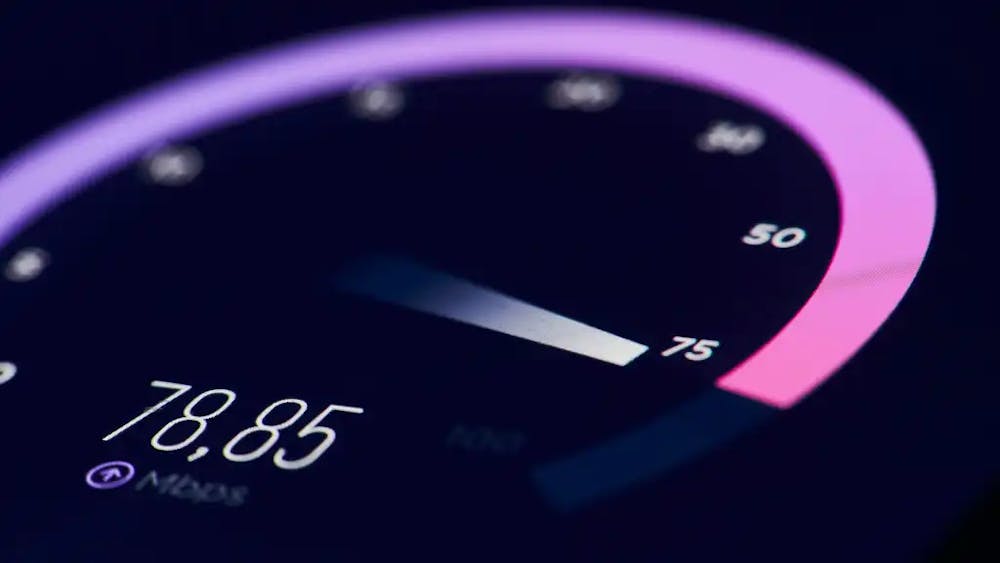How to speed up slow broadband
Slow broadband can be really frustrating, especially if you’re paying for a fast broadband package that isn’t performing. Here’s how to check your broadband speed and improve a slow broadband connection.
Why is your broadband connection slow?
A slow internet connection can occur for a variety of reasons.
The type of broadband connection you have can be a big factor, but if your plan has decent advertised speeds and you’re still struggling, it could be because you’re:
How to check your broadband speed
The first thing to do if you’re unhappy with your broadband speed is to carry out a speed test. This checks how fast your download and upload speeds are.
Try to do this at different times of the day, to get an accurate reflection of your average broadband speed. You can find out more about how to test your internet connection in our broadband speeds in Ireland guide.
How fast should your broadband be?
When you carry out the speed test, you may find your broadband speed is significantly lower than your provider’s advertised average speed.
Average speeds reflect the typical speed you’ll achieve from your broadband package, but are not guaranteed.
The internet speed you actually get will depend on the:
- type of broadband connection
- distance from the nearest telephone exchange
However if you’re signed up to a full fibre plan, also known as Fibre-to-the-Home (FTTH), then the distance from your cabinet won’t matter.
This type of connection should deliver the fastest broadband speeds and be closest to the advertised average.
If your broadband connection is slow because you live in a rural area, here are the rural broadband options in Ireland.
How to improve slow broadband
You’ll get much faster speeds if you connect your device to the router directly, but this isn’t practical in a household with many devices that need to be connected at one time.
The way you improve your connection will depend if its:
- Wireless (WiFi)
- Wired
WiFi connection
You’ll get slower speeds using WiFi than you would if you were connected directly to the router.
Try connecting your device directly to the router with an ethernet cable. If you notice a big improvement in your connection speeds, then WiFi signal may be the issue.
If you live in an apartment building or an area with lots of wireless modems and lots of devices, you may experience some wireless interference which could slow your internet speeds.
If you have a large number of devices connected to the WiFi, it may be that one of these is causing an issue. You could try disconnecting all of your devices one by one, to see if there’s a particular one that’s causing you a problem.
There are several things you can do to improve your speeds, even if you can only use WiFi:
- Make sure the router is not inside in a cabinet or surrounded by things that may block the signal
- Ensure the modem is not near devices that could interfere with it e.g. microwaves, baby monitors or cordless phones
- Don’t plug your router out at night. Though this saves energy, it makes the line look unstable and your speed may be automatically reduced to improve the connection.
- Move the router into the room where you use the internet most
- Use a WiFi extender
If you think you may be suffering WiFi channel interference, simply rebooting your modem by unplugging it and leaving it for 30 seconds may help. Plugging it back in should automatically select the most appropriate channel for you.
Wired connection
If your wired connection is slower than expected, the problem is more difficult to diagnose. You could try a different ethernet cable or remove any splitters you use.
If this doesn’t help, contact your broadband provider. They will offer advice or technical assistance and may agree to give you a newer modem, which could make a big difference.
If your provider can’t help, and you are still not satisfied with your broadband speed, you may want to look around and see if you can find a high-speed broadband package or a different provider.
What is the fastest broadband package?
The fastest broadband plans are those with a full-fibre connection, but they’re not always available across the whole country.
Eir and Virgin Media currently offer plans with 5,000Mbps (5Gbps) speeds - the fastest in the country - through their own networks.
If you’re in an area serviced by the SIRO or NBI Network you could get speeds up to 2,000Mbps (2Gbps).
If you can’t get full fibre where you live, it’s likely you’ll still get fast part-fibre or 5G mobile broadband from other broadband providers operating in your area.
Other reliable broadband connections via ADSL broadband or satellite broadband are fast enough for light internet use.
Carrying out a comparison of broadband where you live will give you the best idea of what’s available, and you can choose the plan with a speed and price that suits you best.
Should you switch to a different type of broadband?
If you’ve tried all of the tips outlined above and they haven’t helped, you may want to look around and find a broadband deal with better average speeds or a different type of connection in your area.
Comparing high-speed broadband packages is easy, and you could make big savings by switching, as most providers offer decent introductory discounts.
Visit our switching your broadband provider guide to learn more about choosing another provider.
Enjoy superfast fibre broadband
Use our eircode checker to find your best deal and switch today
